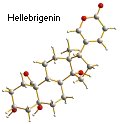 Many people in the modern Western world delude themselves that their culture is generally free from the effects of intoxicating substances except in the criminal underworld, and that ‘nice people don’t take drugs’. But Richard Rudgley of the University of Oxford, a researcher of the oasis communities of Chinese Central Asia, shows that our culture and other cultures across the world have a rich tradition of using chemicals, mainly from plants, to produce altered states of consciousness. These range from the ritualistic use of the fly-agaric in Palaeolithic Europe to betel-nut chewing in Papua New Guinea, and from pretentious bone-china tea sets in Surbiton to the tragic inhaling of petrol fumes by Aboriginal Australians.
Many people in the modern Western world delude themselves that their culture is generally free from the effects of intoxicating substances except in the criminal underworld, and that ‘nice people don’t take drugs’. But Richard Rudgley of the University of Oxford, a researcher of the oasis communities of Chinese Central Asia, shows that our culture and other cultures across the world have a rich tradition of using chemicals, mainly from plants, to produce altered states of consciousness. These range from the ritualistic use of the fly-agaric in Palaeolithic Europe to betel-nut chewing in Papua New Guinea, and from pretentious bone-china tea sets in Surbiton to the tragic inhaling of petrol fumes by Aboriginal Australians.
Although each intoxicant has its own effects on the mind – there is some overlap – but researchers have classed them as belonging to four types. Hallucinogens – compounds such as mescaline – are often found in ‘poisonous’ varieties of mushroom or South American weeds. Inebriants consist of generally simpler organic compounds such as alcohol, and the constituents of organic solvents and other volatile chemicals. Hypnotics are compounds that induce states of sleep, stupor or calm and include tranquilizers and narcotics. Stimulants increase mental activity and include caffeine, tobacco and the more potent cocaine and amphetamines.
Rudgley has scoured the scientific literature for examples and evidence from the European Stone Age to modern day Australia to improve our understanding of how these broad classes of intoxicants have affected society and religion. Beginning with evidence from the earliest days of hallucinogen use in Palaeolithic cave art, Rudgley describes in fascinating detail intoxicants and their cultural effects over the past few thousand years.
For example, peyote, the mescaline-containing cactus of Texas and Northern Mexico, apparently played an important role in the cultural development of indigenous peoples of that area, although the plant is now threatened with extinction because of increasing use by modern hedonists. On the Steppes biochemical evidence shows that Cannabis sativa and ethanol have been commonly used for many thousands of years.
Rudgley even has an explanation for the supposed flight of witches and the symbolism of the witch’s broom. A witch wanting to ‘fly’ to a witches’ sabbat, or orgiastic ceremony, would anoint a staff with specially prepared oils containing psychoactive plant matter, as well as rather gruesome ingredients such as baby fat and human blood. The potion could then be administered to areas of the body that could absorb the active components most rapidly. Rudgley quotes one researcher: ‘The use of a staff or broom was undoubtedly more than a symbolic Freudian act, serving as an application for the atropine-containing plant to the sensitive vaginal membranes. . .’ So now you know.
There is little spiritualism attached to the modern Western use of intoxicants such as caffeine and nicotine, and society more than frowns on the use of mind-altering drugs. The modern view is perhaps distorted to some extent by the development of highly addictive stimulants such as ‘crack’, with its potentially devastating effects.
Rudgley hopes that a deeper knowledge of intoxicants’ use in other cultures will result in a better understanding of our own culture of cafes and bars, and this in turn might help us understand the ‘importance of altered states of consciousness in both our collective and our personal lives’.
I wrote the original version of this item as a book review that was published in New Scientist magazine (The Alchemy of Culture by Richard Rudgley, British Museum Press, reviewed issue 1909, p43).
The professional staff at an addiction treatment facility knows how to help a drug addict, so you can rest assured your loved one is in good hands.
 Many people in the modern Western world delude themselves that their culture is generally free from the effects of intoxicating substances except in the criminal underworld, and that ‘nice people don’t take drugs’. But Richard Rudgley of the University of Oxford, a researcher of the oasis communities of Chinese Central Asia, shows that our culture and other cultures across the world have a rich tradition of using chemicals, mainly from plants, to produce altered states of consciousness. These range from the ritualistic use of the fly-agaric in Palaeolithic Europe to betel-nut chewing in Papua New Guinea, and from pretentious bone-china tea sets in Surbiton to the tragic inhaling of petrol fumes by Aboriginal Australians.
Many people in the modern Western world delude themselves that their culture is generally free from the effects of intoxicating substances except in the criminal underworld, and that ‘nice people don’t take drugs’. But Richard Rudgley of the University of Oxford, a researcher of the oasis communities of Chinese Central Asia, shows that our culture and other cultures across the world have a rich tradition of using chemicals, mainly from plants, to produce altered states of consciousness. These range from the ritualistic use of the fly-agaric in Palaeolithic Europe to betel-nut chewing in Papua New Guinea, and from pretentious bone-china tea sets in Surbiton to the tragic inhaling of petrol fumes by Aboriginal Australians.